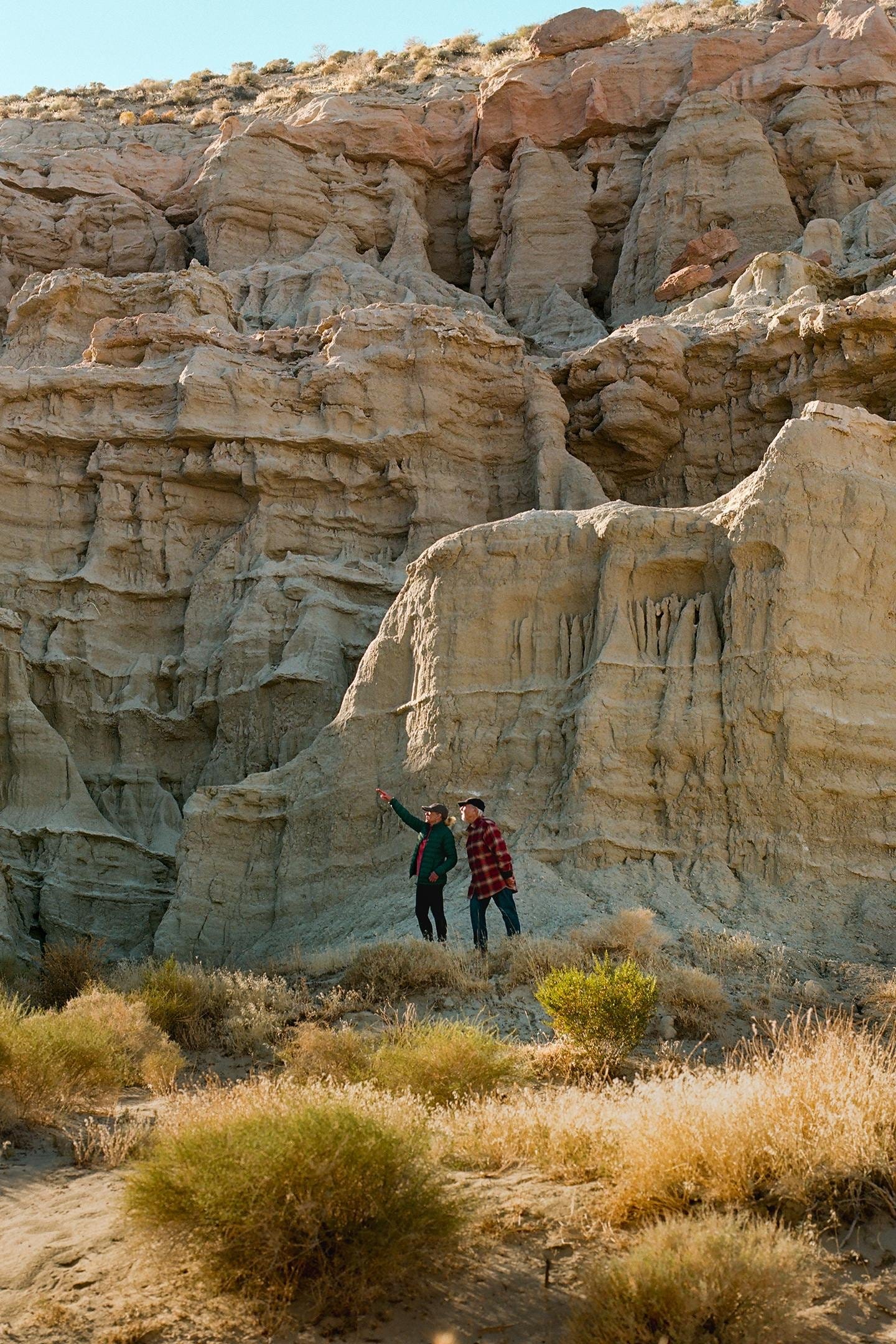I'm Chris, head of creative and story here at Artemis Ward. Every month I bring IQ, UA to The So What, where I chat with somebody who has a finger on the pulse of a moment unfolding in front of us — and together, in five questions + five answers, we try to understand what that moment really means.
For nearly 60 years, the Canadian company Good Sam provided travelers — especially RV enthusiasts — the services and support they needed to feel secure when they hit the open road. In the early days, not only did Good Sam offer memberships and maps and roadside assistance (think AAA) that brought peace of mind to every trip, but they welcomed their customers into an unofficial community of travelers who declared their membership by putting a big red sticker on their vehicle. If you saw a Good Sam sticker on a car in the late 1960s, you knew one of your people was behind the wheel and was happy to lend a hand — or just swap a story or two during a pit stop. This was road tripping how it was meant to be.
Over the decades, though, the brand story fell to the wayside and Good Sam, in most consumers' minds, became just a platform for travel products and services. The promise was still there, but something needed to change. Then, in 2023, brand architect Jody Sugrue stepped in. Looking at the brand from the inside and the outside, she worked alongside her team to evolve Good Sam from a transactional roadside service company to a formidable travel lifestyle brand. With design as a unifying force across product, storytelling, and experience, community and engagement grew exponentially, and a brand story — rooted in emotion, place, and community — showed a new generation of travelers why Good Sam should be part of every great road trip.
Before Good Sam, Jody brought her vision — and, as you'll see if you ever catch up with her in person, her infectious passion for brands and storytelling — to the Toronto International Film Festival, National Geographic, Showtime, and Wildsam, spearheading transformational change at each. And while every brand she worked with came with its own hurdles to clear, the consistent element was that they all needed to find fresh ways to establish their relevance with today's audiences. How to do that? I sat down with Jody to find out.
You've really made your career around building brands that people rally behind. So, how do you know when a brand is in need of rehabilitation — what are the signals, either internally or externally, that tell you that the brand is in need of a little TLC, let's say.
I really think that you feel it before you see it.
Internally, it shows up in hesitation, or a team second guessing things before they put it out. Or the voice changes depending on who's leading a project or who's directing something. If you're having conversations with people, they're not lighting up about the brand, they're not defending the brand, maybe they're dodging it. And I think at that point, that's no longer a creative issue. That is truly an identity issue.
And then externally, I think what ends up happening is you lose engagement with your audience or your consumer. They're no longer tagging you in things. You're not really sparking any conversation. Which doesn't mean there's no love. But it’s a moment for a soul check. Because if you don't know what your point of view is, or what you stand for, and you're not hyper focused on that, you run the risk of just kind of fading out, or blending in. And you lose power. I think brands actually have huge power to bring good to the world, but you lose that power if nobody's paying attention to you or if they’re confused by you.
So when you step into a brand that’s in flux or at an inflection point and ready for that rehab, where do you start? Stories, systems, people, audiences — where are you looking first?
This is a tough one, but I usually start with the people [in charge of the brand]. For me, I'm really listening to how they're describing the brand, the story behind their words. Do they even know what the brand stands for? I believe that when something is made with an element of focus and joy, that you can see it on the other side of a brand. And so if your team is unable to articulate the story, or is feeling confused or disenfranchised or whatever, I think the world sees that. So, is the story alive, or is it just your tagline wallpapered on a wall? Because that's the soul of your brand. You need to understand how people are feeling about it internally.
And then I look at the story itself. Is the brand story clear? Is it focused? Is it energized? Does it have a really clear value proposition? Because if the story isn't clear internally, then it's never going to land externally. No system or style guide will fix that. The magic actually isn't in the design or the tools. It's in your team, the people who are bringing it to life. If your team doesn't have something to believe in, then they won't be able to deliver on it.
Once brands have a sense of what their story is, they move into a quantity game. But, as I’ve heard you say before, it's not about the amount of content you put out there; it's about the content having meaning. Which makes me wonder how you build the systems for — and rally the team around — prioritizing substance over just the volume of content that you're putting out there into the world.
God, I could talk for hours on this. I feel like we should be having a beer.
I do think oftentimes brands start with production, not purpose. But I think you need to start with purpose, not production. And I think brands get caught up in trend chasing, like, If we can just get in this conversation, it's going to be amazing, you know? But then you look around and suddenly you're filled with so much noise and so much content that a lot of it is reactive or forgettable. Brands that show up with intention are the ones that actually earn the attention of their audience. So no, the answer is not more content. It is really showing up with something to say, with clarity, when it matters, where it matters. And that doesn't have to be everywhere. It doesn't have to be all the time.
As for the second part of your question, you need to build systems that are not your typical marketing production team systems. I think you need to build systems that are rooted in teams that you trust, implicitly — trust that is not built on layers of approval or bottlenecks. It’s about truly empowering your team to be plugged in, anchored in the core truth of your brand, and then giving them room to move, to listen to the things that are being said in your comments and the things that are being said about your brand, and to really respond to that and make it more of a conversation, as opposed to a platform.
So you want the people on your teams to be part of conversations as they're unfolding. Twenty years ago, when you built a brand, it was like a flag you cemented into the ground, and then you pushed your top-down messages. But as you’re getting at, now brands need to be flexible enough to adapt to the moments happening around them and to allow audiences to help define that experience — that story — for the brand. How do you do that in a way that is flexible, but not inconsistent with the heartbeat and the integrity of the brand?
Flexibility is like jazz and inconsistency is like noise. Meaning, flexibility is like jazz players, who are all playing different instruments, but they're circling around the same composition with the same soul — playing different things, but the sum of the parts is lending to this wonderful harmony. Inconsistency is just noise. And so in my mind, great brands should be able to riff without losing their tune. And the difference is discipline, which is not the same thing as constraints. I think if you have that discipline, you can stretch into new platforms, new formats, new voices, all without losing your soul. As long as you're anchored in something solid and you have the guardrails in place and the vision — that is, your voice, your values, your point of view — and you know, ultimately, what your audience actually cares about, then you can be ready to hit a moment when it strikes. Because you're ready, you're in there, you're firing on all cylinders.
That's right. And our attention is dispersed across channels where everything’s happening in real time. So my question is not only why should brands double down on flexibility right now, but also what's at stake if you don't do that? What if you still hold onto the old flagpole? What do you lose?
I truly think the difference is you become culturally irrelevant — because you're not chasing relevance. But when you do, you actually have a chance to lead some of the conversations and to show up in people's lives differently. I think ultimately the world moves real fast, and if your brand is only working off annual calendars and playbooks, then you're already behind. I do think you need to be relevant, and relevancy is a real-time thing. You can't fake it.
I also think AI is changing a lot of things. It's accelerating everything. Timelines are shrinking. But, more and more, people are looking for realness and connection. And so they're going to turn to brands that don't look and act like robots, but show up feeling real, maybe even slightly flawed at times. I think there's going to be a really interesting shift there. So, if you're not investing in flexibility and the nuance of all of that, you are risking becoming the brand that feels very slow, very transactional — dare I say, irrelevant. And irrelevant is the worst thing you can be.
⛰️ Keep up with Jody on LinkedIn and Instagram — and check out her website to read more about her work, from Nat Geo to Good Sam.
✉️ And, if you haven’t yet subscribed, click the link below so you don’t miss a thing.












